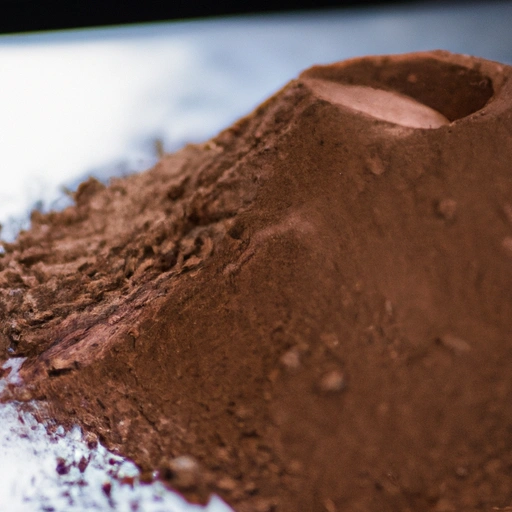Cocoa Powder
Description

Cocoa powder is a rich and flavorful ingredient derived from cocoa beans, which are the seeds of the Theobroma cacao tree. After the beans are fermented, dried, and roasted, they are processed to remove the fat (cocoa butter), leaving behind the cocoa solids that are then ground into fine powder.
This versatile ingredient is available in different varieties, including natural unsweetened, Dutch-processed (alkalized), and black cocoa, each with its distinct taste and color profile.
Common uses
Cocoa powder is widely used as a flavoring and colorant in a variety of food products. It is a staple ingredient in desserts like cakes, brownies, and chocolate cookies, and is also used in making chocolate milk, ice cream, and as a dusting for truffles and desserts. Beyond sweets, cocoa powder is used in mole sauces and sometimes in rubs for meats, adding a deep, rich flavor.
Nutritional value
Calories
Unsweetened cocoa powder is low in calories, with about 12 calories per tablespoon (5 grams).
Protein
Each tablespoon of cocoa powder contains approximately 1 gram of protein.
Fat
Cocoa powder contains about 0.74 grams of fat per tablespoon, most of which is saturated fat.
Carbohydrates
There are about 3 grams of carbohydrates in a tablespoon of cocoa powder, with 2 grams being dietary fiber.
Vitamins
It is a source of B vitamins, particularly vitamin B2 (riboflavin) and vitamin B3 (niacin).
Minerals
Cocoa powder is rich in minerals such as iron, magnesium, phosphorus, potassium, and zinc.
Health benefits
Cocoa powder is known for its antioxidant properties, thanks to the presence of flavonoids. Regular consumption in moderation can support cardiovascular health, improve brain function, and reduce inflammation. It may also contribute to mood enhancement due to the presence of compounds like theobromine and phenethylamine.
Potential risks
While cocoa powder has many health benefits, overconsumption can lead to potential risks such as increased caffeine intake, which may lead to insomnia or increased heart rate. It also contains oxalates, which can contribute to kidney stone formation in susceptible individuals. People with allergies to chocolate or a sensitivity to caffeine should consume it with caution.
Common recipes
Common recipes featuring cocoa powder include classic chocolate cake, brownies, chocolate chip cookies, and hot cocoa. It can also be used in homemade chocolate bars, fudge, and mousse.
Cooking methods
Cocoa powder can be mixed into batters and doughs, used in dry rubs, or blended into liquids. It is important to sift cocoa powder before use to prevent clumps and ensure even distribution in recipes.
Pairing with other ingredients
Cocoa powder pairs well with flavors like mint, coffee, vanilla, berries, nuts, and spices such as cinnamon and chili. It can also complement savory ingredients in complex dishes like mole poblano.
Summary
Cocoa powder is an indispensable ingredient in both sweet and savory recipes. It offers a deep, rich chocolate flavor and a host of nutritional benefits, making it a favorite among chefs and home cooks. When used appropriately, it can enhance the taste and healthfulness of various dishes, while its historical roots add depth to its culinary significance.